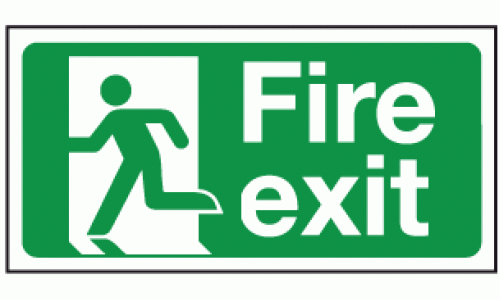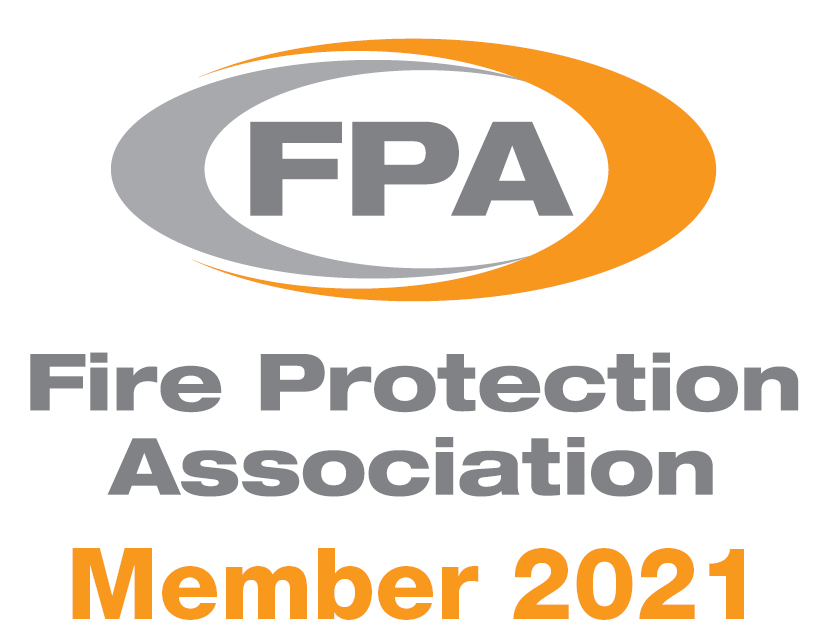
Ensure Compliance with the Fire Regulations
Online Quotation
Located Solihull, Birmingham Area.
Main areas covered include - Coventry, Stoke, Nottingham, Leicester, Stafford, Shrewsbury, Telford, Milton Keynes, Oxford, Luton, Uxbridge, Hemel Hempstead, Banbury. Gloucester, Wolverhampton, Worcester, Northampton, Derby, Hereford
See Genuine Valid Google Customer Reviews Below
Fire Safety Signs

In simple premises, a few fire safety signs indicating the alternative exit(s) might be all that is needed. In more complex premises, a series of signs directing people along the escape routes towards the final exit may be required.
Many people with poor vision retain some sight and are able to recognise changing or contrasting colour to provide them with visual clues when moving around a building. It may be sufficient to paint any columns and walls in a contrasting colour and to highlight changes in level by, for example, making the nosing to step and stair treads a contrasting colour. For people with no sight, a well-managed ‘buddy system’, continuous handrails, a sound localisation system (which helps people to move towards an alert sound) or the installation of more tactile aids may be appropriate.
Exit signs should be clearly visible whenever the public, staff and contractors are present.
Positioning of Fire Safety Signs
The presence of other fire safety signs (such as staff notices or operating instructions) can distract attention from, or obscure the visibility of, escape signs. This could affect people’s ability to see and understand escape signs, particularly if there is a fire evacuation. Always ensure that escape signs are not overwhelmed.
Escape signs should meet the following criteria:
• They should provide clear, unambiguous information to enable people to safely leave a building in an emergency.
• Every escape route sign should, where necessary, incorporate, or be accompanied by, a directional arrow. Arrows should not be used on their own.
• If the escape route to the nearest exit is not obvious then it should be indicated by a sign(s).
Signs should be positioned so that a person escaping will always have the next escape route sign in sight.
• Escape signs should be fixed above the door in the direction of escape and not be fixed to doors, as they will not be visible if the door is open.
• Signs mounted above doors should be at a height of between 2.0m and 2.5m above the floor.
• Signs on walls should be mounted between 1.7m and 2.0m above the floor.
• Mounting heights greater than 2.5m may be used for hanging signs, e.g. in large open spaces or for operational reasons, but care should be taken to ensure that such signs are both conspicuous and legible. In such case larger signs may be necessary.
• Signs should be sited at the same height throughout the escape route, so far as is reasonably practicable.
Fire Safety Sign Design
For fire safety signs to comply with Health and Safety (Safety Signs and Signals) Regulations 1996 (it must be pictographic). The pictogram can be supplemented by text if this is considered necessary to make the sign easily understood (BS-type sign), but you must not have a fire safety sign that uses only text. Either type of sign can be used but different types should not be mixed.
Appropriate fire safety signs should take into account the needs of those who may need to use them.The legibility of escape signs is determined by the size of the sign, its level of illumination and the distance over which it is viewed. The use of signs within the same premises should follow a consistent design pattern or scheme.You should not rely on a few outsized signs which may encourage people to travel to a particular escape route when other more appropriate routes should be used.
In multi-occupied premises, co-operation between the respective ‘responsible persons’should be sought to ensure that, as far as possible, all signs in the building conform to a single pattern or scheme.
Other Fire Safety Signs

A number of other mandatory signs such as ‘Fire action’ notices may also be necessary. Fire doors that have been fitted with self closing devices should be labelled ‘Fire door – keep shut’ on both sides. Fire resisting doors to cupboards, stores and service ducts that are not self-closing because they are routinely kept locked should be labelled ‘Fire door – keep locked’ on the outside.
Signs should indicate non-automatic fire safety equipment if there is any doubt about its location,e.g. fire extinguishers that are kept in cabinets or in recesses.A notice with the words ‘Push bar to open’ should be permanently displayed immediately above the push-bar on all doors fitted with a panic bolt or panic latch.A notice with the words ‘Fire escape – keep clear’ should be permanently displayed at about eye level on the external face of all doors which are provided as a means of escape in case of fire and which, because they are not normally used, may become obstructed.
Staff notices
In simple premises where there are a limited number of escape routes, it may be reasonable to provide staff with verbal reminders of what they need to do if there is a fire. In some premises, you could consider providing a short written statement that could, for example, be delivered with staff pay slips every six months.In multi-occupied, larger and more complex premises or where there is a high turnover of staff, a more considered approach for staff notices and instructions will be necessary. As well as positioning the fire instructions notice on escape routes adjacent to fire break-glass call points, put them where staff frequently assemble in the premises, e.g. the canteen and locker rooms.
If your premises are routinely expected to accommodate people whose first language is not English you may need to consider providing instructions in more than one language. The interpretation should always convey an identical message.Illumination All signs and notices will need illumination to ensure they are conspicuous and legible.
There are a number of options available to achieve this, such as external illumination; and internal illumination.The supplier or other competent person can give you further advice.Signs or notices of the photo-luminescent type, i.e. where the active material making up the luminous parts of such signs or notices needs a period of exposure to light before they become visible in darkness (but get fainter with time),are not a substitute for appropriate emergency lighting and should only be used where other forms of illumination are present.




